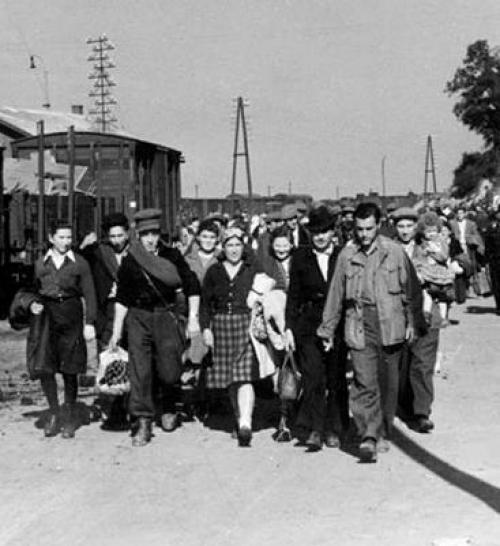New Exhibition Mémorial de la Shoah: After the Holocaust

Exhibition / films and discussions
27 January - 30 October 2016
EHRI partner Mémorial de la Shoah (Shoah Memorial), based in Paris, currently hosts a new exhibition, titled After the Holocaust. Survivors and Refugees. 1944-1947.
It is a bilingual exhibition featuring many archival documents, films and nearly 250 photographs on the period immediately after the catastrophe. Around the exhibition, Mémorial de la Shoah organizes a series of screenings and panel discussions with many historians, specialists, witnesses and filmmakers.
Returning to a normal life
After the catastrophe, returning to a normal life barely seemed possible for the Jews of Europe who somehow survived the Holocaust against all odds. Although victims of a specific persecution, their fate was just one problem among many on a continent in ruins.
Diversity of situations
This bilingual exhibition featuring archival documents, films and nearly 250 photographs — most of them from the collections of the Mémorial de la Shoah —sheds light on the diversity of situations in the general chaos as Europe emerged from war. Refugees, camp survivors, hidden children and members of the Resistance aspired to be reunited with their loved ones, to return home or find shelter, to imagine a new life. Who could they turn to for help? Where could they turn to seek justice? How could they preserve the remnants of a vanished world and collect evidence of the crime that had been committed against them?
A historical period in its own right
The first thing that comes to mind when we think of the period immediately after the Holocaust is searing images of the newly opened camps. But the months from late July 1944, when the first camp was liberated by the Soviets, to autumn 1947, the eve of Israel’s independence, are a historical period in its own right.
Three countries
Uncertainty prevailed everywhere, especially the three countries that are the exhibition’s main focus. In Poland, over half the refugees returning from the USSR and most of the few survivors left a country that was hostile to them. In Allied-occupied Germany, around 250 000 Jewish refugees fleeing Eastern Europe found themselves in camps opened up to take in millions of “displaced persons” awaiting the possibility to emigrate to a country willing to accept them. In France, most Jews were out of danger by September 1944. Most of the country had been liberated by then, but the road back to a new life was often long and hard. No sooner had the war ended than France had to cope with an influx of two very vulnerable Jewish populations: the camps’ few survivors and numerous refugees from Central and Eastern Europe.
"First memory"
Mutual aid, solidarity and support from Jewish organisations, especially American ones, helped decimated Jewish communities rebuild religious, cultural and political institutions. With testimonies and documents collected during and just after the war, they produced the first accounts and compiled a “first memory”. The years 1944-47 were a time when Jewish survivors sought to take their destinies back into their own hands.
Curators: Henry Rousso, (CNRS) with Laure Fourtage and Julia Maspero (Paris 1), Constance Pâris de Bollardière (EHESS) and Simon Perego (IEP Paris).
Image: Polish survivors alighting from a train, Nachod, Czechoslovakia, 1945. Yad Vashem. Photo: Arthur Zegart.